
Kyoto's Famed Saihoji Temple
Mandy BartokTucked away in the hills west of Kyoto, this unique World Heritage sight boasts one of the city's most amazing gardens

The Saihoji Temple was founded during the Nara period, about 1300 years ago, by the priest Gyōki at the request of the Emperor Shōmu, along with forty-nine other temples of the Hosso sect.
In 1339, in the midst of the devastation of the post-war period, Musō Kokushi, then one of the most respected Zen priests in Japan, revived the temple as a Zen temple at the invitation of Fujiwara Chikahide (the chief priest of the Matsunō shrine).
The complex with an area of 35,000 square meters is now one of the special historical sites and places of scenic beauty in Japan and was included in the list of World Heritage Sites by UNESCO in 1994 as a historical monument of ancient Kyoto. Because of the beautiful moss that covers the area, it is now popularly known as Kokedera (moss temple).
The upper floor of Saiho-ji’s famed garden is the Karesansui Style Garden. Unlike its lower floor, this garden is made entirely out of rocks. It was said that the creator, Muso Kokushi, meant for this to be his grave. However, he decided to let the garden live on as a symbol of Zen Spirituality. In 1339 when it was built, it was common to have ponds and water in Zen gardens. Yet Muso Kokushi chose to use rocks to portray this spirit, an innovative idea that served as inspiration to many others. The Karesansui-style garden in Saiho-ji is also regarded as Japan’s founder of rock gardens.
The lower floor of the famed moss garden is a classical-style garden. Amongst the lush foliage and green moss carpets is the Ougonchi Pond. The heart-shaped pond lies at the center of the garden, producing stunning reflections in the water on a clear day. Also known as Shinji Ike, the term ‘heart’ is also known as the Chinese character 心, giving the pond a second identity as the “Heart Pond”. Both gardens are recognised as Historic Sites and Places of Scenic Beauty by the Japanese Government.
Built during the Toyotomi Period, the Shonantei Tea House is a historic building recognised by Kyoto as a National Treasure. The tea house was allegedly used as a hiding spot for Iwakura Tomomi during the Meiji Restoration. Now, Shonantei is also known for being a moon-watching spot in Northern Kyoto.
To visit Saiho-ji, one must make a reservation at least 1-2 months in advance. The guided tour includes an exclusive meditation and sutra chanting service, in addition to the comprehensive 90-minute tour of the gardens. It’s best to seek the advice of your hotel to help arrange a reservation as the process is mostly in Japanese.
5-minute walk from Kokedera Bus Stop

Tucked away in the hills west of Kyoto, this unique World Heritage sight boasts one of the city's most amazing gardens
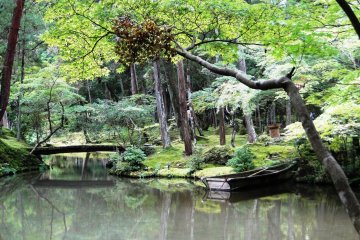
Saihoji's famed moss garden is worth the effort it takes to get to on the outer fringes of Kyoto

Koke-dera (Saiho-ji) Temple: Moss carpeted, Zen practice garden has a unique atmosphere that has attracted famous people such as Steve Jobs (co-founder of Apple) or Richard Gere (American actor).
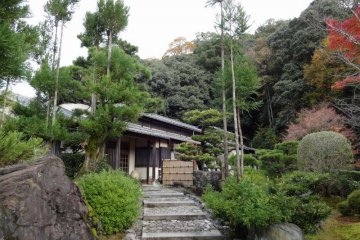
A hidden gem, Ryokan Yamazaki is worth the 30 minute bus ride from central Kyoto. Tranquil surroundings, hearty food and family treatment will start & end your day right.

Finding a great place to stay in any city is always a challenge. But nestled on a quiet street a brief walk from Kyoto Station, perfectly-located luxury accommodations await travelers.
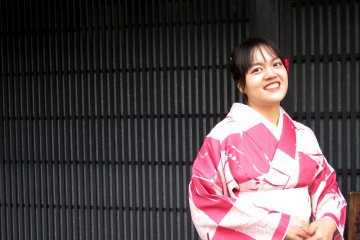
I have been to Kyoto a dozen times, but it is only now when it has sunk in, as to what this place is all is about.
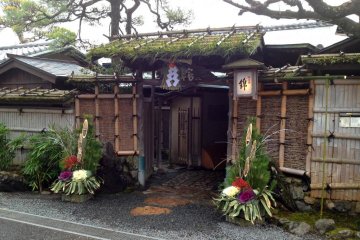
Nishiki is a fine restaurant on the Katsura River in the Arashiyama area of Kyoto. It is a fine place to enjoy Kawadoko Ryori in a traditional Japanese setting.

Ex Cafe, also known as Ickx Cafe, is an art-filled eatery and is nestled along a side street of Arashiyama. Serving up delectable kakigori as well as a unique style of roll cake, day trekkers can fill up on sweets and drinks to combat the Kyoto heat.
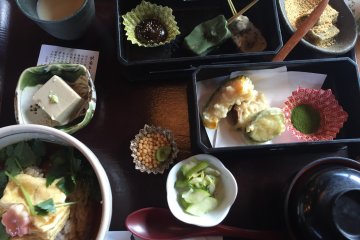
At Saga Tofu Ine in Arashiyama, yuba and tofu are served in many different ways. Some dishes are roasted, some are boiled, and some fried. Saga Tofu Ine is located about ten minutes by foot from the JR Saga-Arashiyama Station, and is directly across from the temple, Tenryu-ii. One may sit on the second floor and look into the temple and the greenery with a peaceful mind and a big appetite.
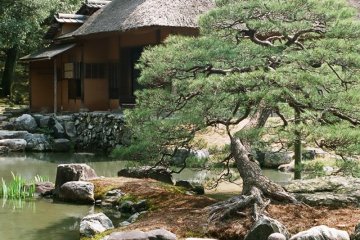
The Katsura Imperial Villa, or Katsura Detached Palace, is a villa with associated gardens and outbuildings in the western suburbs of Kyoto, Japan. It is one of Japan's most important large-scale cultural treasures. [Wikipedia] A reservation is required to visit the Katsura Imperial Villa.
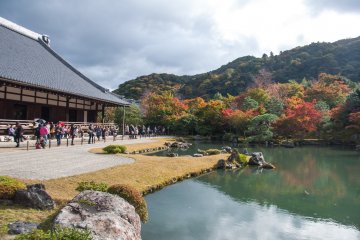
The Tenryuji is the main temple of the Rinzai Zen Buddhism sect of the same name and is located in the Arashiyama district in the northwest of the city of Kyoto. It is the most important Zen temple in the city and is a UNESCO World Heritage Site. The temple was built in 1339 by Shogun Ashikaga Takauji, who dedicated it to the recently deceased Emperor Go-Daigo. Both men were former allies until Takauji rebelled against the emperor in the struggle for supremacy in Japan. The temple should pacify the spirit of the deceased. The buildings of Tenryuji have been repeatedly destroyed by fire over the centuries, so that the current complex largely dates from the Meiji period (1868-1912). In contrast, the surrounding garden, which was designed by the well-known master of gardening, Muso Soseki, is still almost entirely original. Especially in autumn, when the foliage of the trees there and the Arashiyama mountains visible behind them turn red and yellow, the Tenryuji and its garden are a popular destination.

The Arashiyama Bamboo Forest is one of the most popular attractions in Kyoto and is made up of numerous trails for visitors to enjoy. For the best photos, make sure to get here early in the morning as it gets crowded very quickly. It's not just the beauty of the bamboo that attracts people. The Arashiyama bamboo forest is one of the 100 most beautiful soundscapes in Japan, which are designated by the Japanese Ministry of the Environment. The sound of the rustling bamboo swaying in the wind is almost meditative. If you walk along the main street of Arashiyama, you will also pass Tenryuji Temple, one of the most beautiful Zen temples in Kyoto. According to Japanese tradition, bamboo is a symbol of strength. Therefore, it often happens that a Buddhist temple or Shinto shrine has a small bamboo grove on its premises to ward off evil.